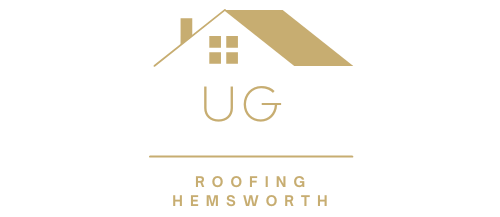The Basics of Pitched Roof Maintenance
Introduction: Your pitched roof is vital to your home’s protection against the elements, and regular maintenance is key to keeping it in top condition. In this blog post, brought to you by UG Roofing Hemsworth, we will cover the basics of pitched roof maintenance to help you safeguard your investment and ensure your roof’s longevity.
1. Visual Inspection
Start your pitched roof maintenance routine with a visual inspection. From the ground, look for the following signs of potential issues:
- Missing or damaged shingles or tiles
- Moss or algae growth
- Cracked or curling shingles
- Damaged flashing around chimneys, vents, and skylights
- Sagging or bowed areas
- Debris like leaves or branches
2. Clear Debris
Regularly clear any debris from your roof, including leaves, branches, and other organic matter. Accumulated debris can trap moisture and cause rot, mould, or moss growth.
3. Clean Gutters and Downspouts
Clogged gutters and downspouts can lead to water overflow and damage to your roof and home’s foundation. Clean them out regularly to ensure proper drainage.
4. Check for Water Leaks
After a rainstorm, check your attic or crawl space for signs of water leaks, such as water stains or damp insulation. Address any leaks promptly to prevent further damage.
5. Trim Overhanging Branches
Overhanging tree branches can scrape and damage your roof and provide a pathway for pests like squirrels to access your home. Trim branches that are too close to your roof.
6. Moss and Algae Removal
Moss and algae can trap moisture, potentially leading to roof damage. Remove them carefully, avoiding damage to your shingles. Consider zinc or copper strips to prevent regrowth.
7. Replace Damaged Shingles
If you notice damaged or missing shingles, replace them promptly to prevent water from seeping into your home’s structure.
8. Inspect Flashing
Check the flashing around chimneys, vents, and skylights for signs of wear or damage. Damaged flashing can lead to leaks, so address any issues promptly.
9. Insulation and Ventilation
Ensure that your attic is properly insulated and ventilated. Adequate ventilation helps regulate temperature and humidity, preventing moisture-related problems.
10. Professional Roof Inspection
Consider scheduling an annual or bi-annual professional roof inspection. Roofing experts can identify issues that may not be visible during a visual inspection and recommend necessary repairs or maintenance.
Conclusion: Regular maintenance is essential for preserving the integrity of your pitched roof. By following these basic maintenance steps, you can extend the life of your roof, prevent costly repairs, and ensure your home remains protected from the elements.
Call us on: 01977 804 699
Click here to find out more about UG Roofing Hemsworth
Click here to complete our contact form and see how we can help with your roofing needs.

